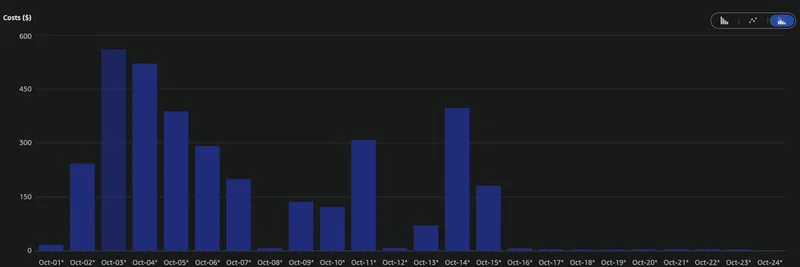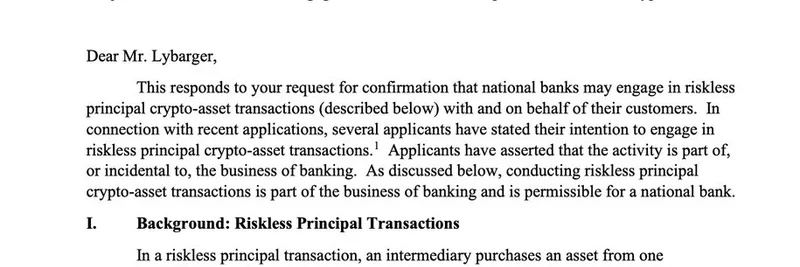In the fast-paced world of blockchain development, where projects like on-chain perpetuals and rollups demand robust infrastructure, keeping cloud costs in check is crucial. A recent thread on X highlights just how easy it is to rack up unnecessary expenses on AWS—and how simple fixes can save thousands. Let's dive into the insights shared by DevOps engineer Branko Petric and blockchain expert Tristan from Bullet.xyz.
The NAT Gateway Nightmare: $4,800 Monthly Bill Shock
It all started with a post from Branko Petric, a DevOps specialist, who revealed how his team's NAT Gateway costs ballooned to $4,800 per month—more than their entire application infrastructure. For those new to AWS, NAT Gateways allow resources in private subnets to access the internet without exposing them publicly. They charge $0.045 per GB of data processed and $0.045 per hour they're running.
Branko's team was running three NAT Gateways for high availability, processing a whopping 89 TB of data monthly. The culprits? Outbound API calls, Docker image pulls from Docker Hub, package downloads, CloudWatch logs, and S3 uploads. Their AWS bill jumped from $12k to $17k, prompting a deep dive.
Here's how they turned things around:
Switched to VPC Endpoints: These provide private access to services like S3 and DynamoDB without going through the internet. Adding them saved 34 TB/month in data transfer—at no extra cost.
Migrated to Amazon ECR: Instead of pulling images from Docker Hub (which routes through NAT), they moved to ECR, saving 22 TB/month.
Optimized API Calls: By batching requests and adding caching, they reduced external calls by 60%, cutting another 18 TB/month.
Reduced NAT Gateways: Dropping from three to one saved $720/month in hourly charges, accepting a bit more risk for non-production environments.
The result? Data through NAT dropped to 15 TB/month, bringing costs down to $915—saving $3,885 monthly, or over $46k annually. Branko's key takeaway: Audit your traffic early, as data transfer fees add up fast, and VPC Endpoints are a free win.
This story resonates especially in blockchain circles, where services often involve heavy data syncing, API integrations with nodes, or oracle feeds— all potential NAT hogs.
Tristan's Load Balancer Blunder: Thousands Burned on a Misconfig
Building on Branko's thread, Tristan, a former ML engineer now perfecting on-chain perps at Bullet.xyz, shared his own costly mishap. His team accidentally burned through several grand on Elastic Load Balancing (ELB) costs due to a high-traffic internal service misconfigured to call rollup APIs over the public internet.
Instead of routing internally via VPC (which is free), it went through ELB and Internet Gateway (IGW), incurring hefty fees. Rollups, for the uninitiated, are layer-2 scaling solutions that bundle transactions off-chain before settling on the main blockchain—common in DeFi and meme token ecosystems for efficiency.
The fix? A single line of code to route internally. This slashed ELB costs to just $3/day, a 90% reduction. It also cut data ingress via Cloudflare by 90% and likely improved latency.
The graph above illustrates the before-and-after: Costs plummeted after the optimization, highlighting how quickly misconfigs can spiral in high-traffic blockchain apps.
Tristan also shared a data transfer graph from Cloudflare, showing a sharp drop post-fix—totaling 246.45 GB before stabilizing lower.
Branko replied, noting AWS networking's intentional complexity, emphasizing the need for vigilance.
Key Lessons for Meme Token and Blockchain Builders
These stories underscore a vital truth for anyone building on blockchain: Cloud infrastructure isn't just about scalability—it's about smart configuration to avoid bill shocks. Meme token projects, often bootstrapped and traffic-volatile, are particularly vulnerable. A viral pump could amplify misconfig costs overnight.
Tips to apply:
Regular Bill Audits: Line-by-line reviews can uncover hidden fees.
Internal Routing Priority: Always prefer VPC for intra-service communication.
Endpoint Utilization: Leverage free AWS endpoints for S3, ECR, and more.
Caching and Batching: Reduce external dependencies in API-heavy setups like oracle integrations.
Monitor Traffic Sources: Tools like CloudWatch help pinpoint wasteful data flows.
By heeding these experiences, blockchain practitioners can focus more on innovation—like creating the next big meme token—and less on extinguishing financial fires. Check out the full thread on X for more details, and share your own cost-saving hacks in the comments!



